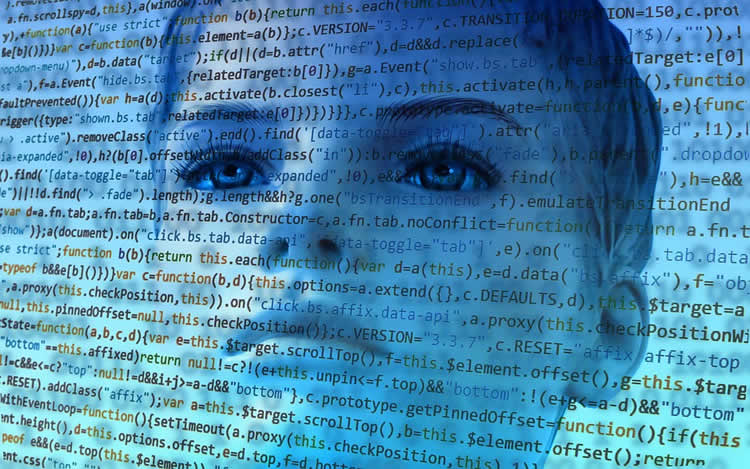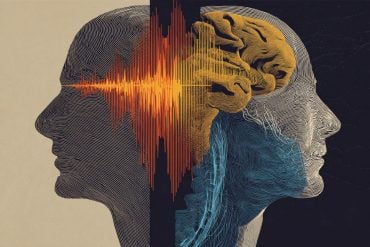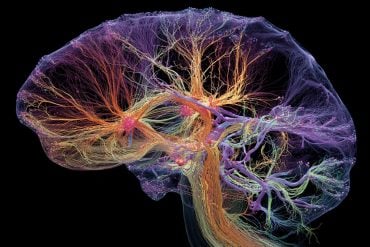Summary: A new machine learning algorithm has proved to be over 91% effective in predicting which students are at higher risk of perpetrating school violence.
Source: Cincinnati Children’s Hospital Medical Center.
A pilot study indicates that artificial intelligence may be useful in predicting which students are at higher risk of perpetrating school violence.
The researchers found that machine learning – the science of getting computers to learn over time without human intervention – is as accurate as a team of child and adolescent psychiatrists, including a forensic psychiatrist, in determining risk for school violence.
“Previous violent behavior, impulsivity, school problems and negative attitudes were correlated with risk to others,” says Drew Barzman, MD, a child forensic psychiatrist at Cincinnati Children’s Hospital Medical Center and lead author of the study. “Our risk assessments were focused on predicting any type of physical aggression at school. We did not gather outcome data to assess whether machine learning could actually help prevent school violence. That is our next goal.”
The study is published online in the journal Psychiatric Quarterly.
Dr. Barzman and his colleagues evaluated 103 teenage students in 74 traditional schools throughout the United States who had a major or minor behavioral change or aggression toward themselves or others. The students were recruited from psychiatry outpatient clinics, inpatient units and emergency departments.
The team performed school risk evaluations with participants. Audio recordings from the evaluations were transcribed and manually annotated. The students, as it turned out, were relatively equally divided between moderate- to high-risk, and low-risk, according to two scales that the team developed and validated in previous research.

There were significant differences in total scores between the high-risk and low-risk groups. The machine learning algorithm that the researchers developed achieved an accuracy rate of 91.02 percent, considered excellent, when using interview content to predict risk of school violence. The rate increased to 91.45 percent when demographic and socioeconomic data were added.
“The machine learning algorithm, based only on the participant’s interview, was almost as accurate in assessing risk levels as a full assessment by our research team, including gathering information from parents and the school, a review of records when available, and scoring on the two scales we developed,” says Yizhao Ni, PhD, a computational scientist in the division of biomedical informatics at Cincinnati Children’s and co-author of the study.
“Our ultimate goal, should research support it, is to spread the use of the machine learning technology to schools in the future to augment structures, professional judgment to more efficiently and effectively prevent school violence, adds Dr. Barzman.”
Funding: The research was conducted in part through grants from the Park Foundation and the Center for Clinical and Translational Science and Training.
Source: Jim Feuer – Cincinnati Children’s Hospital Medical Center
Publisher: Organized by NeuroscienceNews.com.
Image Source: NeuroscienceNews.com image is in the public domain.
Original Research: Abstract for “Automated Risk Assessment for School Violence: a Pilot Study” by Drew Barzman, Yizhao NiMarcus Griffey, Alycia Bachtel, Kenneth Lin, Hannah Jackson, Michael Sorter, and Melissa DelBello in Psychiatric Quarterly. Published May 1 2018.
doi:10.1007/s11126-018-9581-8
[cbtabs][cbtab title=”MLA”]Cincinnati Children’s Hospital Medical Center “Pilot Study Validates Artificial Intelligence to Help Predict School Violence.” NeuroscienceNews. NeuroscienceNews, 2 May 2018.
<https://neurosciencenews.com/ai-school-violence-8946/>.[/cbtab][cbtab title=”APA”]Cincinnati Children’s Hospital Medical Center (2018, May 2). Pilot Study Validates Artificial Intelligence to Help Predict School Violence. NeuroscienceNews. Retrieved May 2, 2018 from https://neurosciencenews.com/ai-school-violence-8946/[/cbtab][cbtab title=”Chicago”]Cincinnati Children’s Hospital Medical Center “Pilot Study Validates Artificial Intelligence to Help Predict School Violence.” https://neurosciencenews.com/ai-school-violence-8946/ (accessed May 2, 2018).[/cbtab][/cbtabs]
Abstract
Automated Risk Assessment for School Violence: a Pilot Study
School violence has increased over the past ten years. This study evaluated students using a more standard and sensitive method to help identify students who are at high risk for school violence. 103 participants were recruited through Cincinnati Children’s Hospital Medical Center (CCHMC) from psychiatry outpatient clinics, the inpatient units, and the emergency department. Participants (ages 12–18) were active students in 74 traditional schools (i.e. non-online education). Collateral information was gathered from guardians before participants were evaluated. School risk evaluations were performed with each participant, and audio recordings from the evaluations were later transcribed and manually annotated. The BRACHA (School Version) and the School Safety Scale (SSS), both 14-item scales, were used. A template of open-ended questions was also used. This analysis included 103 participants who were recruited from 74 different schools. Of the 103 students evaluated, 55 were found to be moderate to high risk and 48 were found to be low risk based on the paper risk assessments including the BRACHA and SSS. Both the BRACHA and the SSS were highly correlated with risk of violence to others (Pearson correlations>0.82). There were significant differences in BRACHA and SSS total scores between low risk and high risk to others groups (p-values <0.001 under unpaired t-test). In particular, there were significant differences in individual SSS items between the two groups (p-value <0.001). Of these items, Previous Violent Behavior (Pearson Correlation = 0.80), Impulsivity (0.69), School Problems (0.64), and Negative Attitudes (0.61) were positively correlated with risk to others. The novel machine learning algorithm achieved an AUC of 91.02% when using the interview content to predict risk of school violence, and the AUC increased to 91.45% when demographic and socioeconomic data were added. Our study indicates that the BRACHA and SSS are clinically useful for assessing risk for school violence. The machine learning algorithm was highly accurate in assessing school violence risk.






